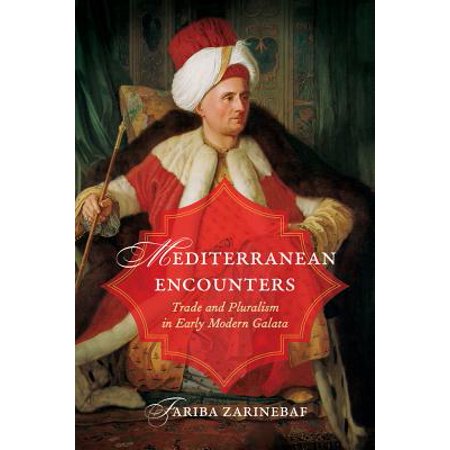Mediterranean Encounters: Trade and Pluralism in Early Modern Galata
Mediterranean Encounters: Trade and Pluralism in Early Modern Galata Reviewed by: Ian Oxnevad, PhD The adage of American politics that “all politics is local” is often unused to explain geopolitical affairs at the intimate level of individuals and urban spaces, let alone in other countries. Fariba Zarinebaf’s Mediterranean Encounters: Trade and Pluralism in Early Modern Galata focuses on early modern Istanbul’s European quarter of Galata and surrounding cityscape as it developed into a labyrinthine venue of political, economic, and religious intrigue. Powered by the legal institution of the Ottoman ahdname, or “treaty of alliance,” Galata became a focal point of tense contact and intimacy for multiple cultures. Drawing heavily from Ottoman archival sources and historical letters, Zarinebaf illustrates a vibrant urban space where European merchants and diplomats, Armenians, Greeks, Jews, Persians, and Turks coalesced to conduct trade. Zarinebaf describes a political economy and diversity that not only challenges essentialist notions of “East” vs. “West,” but also challenges traditional notions of the role of ahdnames or “capitulations” in the Ottoman Empire’s later decline in the 19th century. Rather than being imposed by adventurous European colonial projects, Ottoman ahdnames contributed to the Turkish economy and facilitated political deal making between the Porte, early modern European states, and Ottoman minorities. Contrary to notions that a weak Ottoman state allowed for “capitulations” in the face of modern European nation-states, Zarinebaf notes that the origins of Ottoman ahdnames date to pre-Ottoman practices implemented by the Byzantines, and early Islamic empires in their dealings with foreign powers such as Italian city-states (92-97). Far from the practice of a polity in decline, such Ottoman treaties were a necessary legal institution to facilitate trade in a diverse Mediterranean environment. Such treaties brought a kaleidoscope of cultures together, and created an environment for local and international interests to be carefully navigated. Zarinebaf’s history of Galata is intensely granular, and illustrates incredible intimacy of the various encounters in this urban landscape. While Galata and its surrounding area served as a meeting place of cultures and political intrigue, the described encounters are not cold, or stately. Rather, the court records Zarinebaf uncovers portray encounters in business, crime, religious conversion, and sexuality that make the city come alive. With other work often focused on pure high politics, Zarinebaf’s work offers historians and social scientists a refreshing glimpse of how individuals and small social encounters both fuel political economic affairs, and also get swept away by them. The book makes careful mention at its conclusion that while Galata and other spaces were pluralistic, diversity did not create a widespread “pluralistic consciousness” and that pluralism itself was prone to “rupture” in times of geopolitical tension and economic downturn (272). In sum, Zarinebaf’s book offers important scholarship on several fronts. First, her book challenges the popularly held notion that Ottoman ahdnames comprised a sign of weakness. This challenges both the decline paradigm that has animated much historical work and treatments of the Ottoman Empire in international relations. Second, her book challenges the essentialism on the part of both historical Orientalists, as well as critical scholars adamant about a purely Muslim polity being victimized by a predatory West. Zarinebaf’s work accurately illustrates that coastal polities by their very nature cannot be essential as they are not closed off from the outside world and are as such susceptible to outside influence. Third, and perhaps most critically, Zarinebaf’s work offers a local and urban treatment of political economy and international relations. Geopolitical and economic encounters inevitably come down to individual encounters in discrete settings. Zarinbaf’s urban cityscape of Galata provides a glimpse into how this occurs, and offers something of a rubric for political scientists interested in localized international affairs. |



